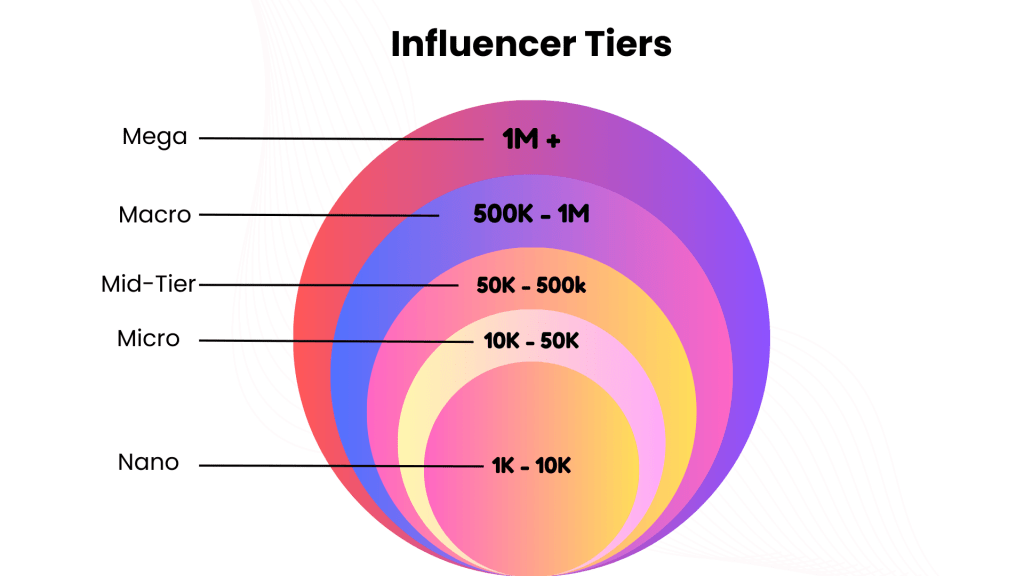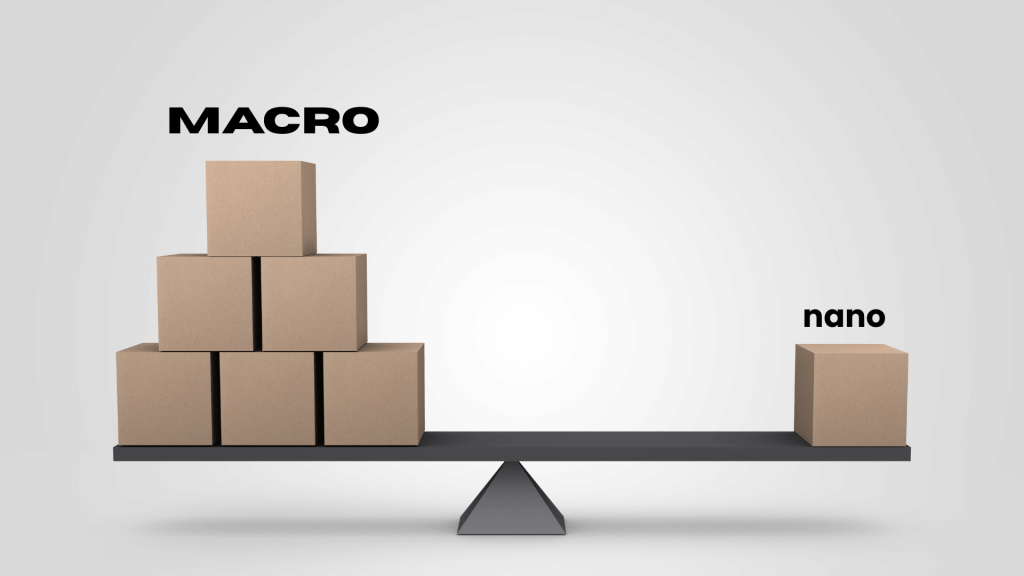In the world of influencer marketing, not all influencers are created equal, and the choice between nano and macro influencers can make or break your campaign. While the industry often highlights big names and celebrity partnerships, brands increasingly discover the unique value of working with both nano and macro influencers. Understanding the benefits and limitations of each category is crucial to creating campaigns that deliver the desired impact.
Contents
The difference between Nano Influencers and Macro Influencers
By definition, Nano influencers are those with a smaller following—typically between 1,000 and 10,000 followers—while macro influencers boast large audiences, usually exceeding 100,000 followers up to around one million. Though both have their place in a robust marketing strategy, they each come with distinct advantages and drawbacks.

What Sets Nano Influencers Apart?
a. High Engagement Rates and Authenticity:
Nano influencers often maintain exceptionally high engagement rates. With smaller followings, they interact directly with their audience, creating a sense of personal connection. Their content feels genuine and relatable, which can foster trust among followers. For example, a nano influencer sharing everyday lifestyle tips or honest product reviews is more likely to be perceived as a friend recommending a must-have item than as a distant celebrity endorsement. This authenticity translates into meaningful interactions and can lead to higher conversion rates for niche products.
b. Cost-Effectiveness:
Due to their modest follower counts, nano influencers typically charge significantly lower fees for sponsored posts. Rates may range from as little as $10 to $100 per post, making them an attractive option for small and medium-sized brands working with limited budgets. By collaborating with multiple nano influencers, brands can effectively spread their message across diverse niche communities without a massive financial outlay.
c. Targeted Niche Audiences:
Nano influencers often serve highly specific communities. If your product caters to a particular interest or demographic, partnering with a nano influencer can help you reach an audience that is already predisposed to your niche. Their recommendations are tailored, and because these influencers focus on a narrow subject area, the audiences are typically very interested in that subject—be it sustainable living, indie fashion, or specialized tech gadgets.
PS: Here are our expert tips on working with Nano influencers
Cons of Nano Influencers
– Limited Reach:
The most apparent drawback of working with nano influencers is their smaller audience size. Even with high engagement rates, a nano-influencer’s reach is naturally limited compared to more prominent accounts. For brands aiming for mass awareness, relying solely on nano influencers might not generate the breadth of exposure needed to create significant buzz.
– Variable Content Quality and Experience:
Many nano influencers are just beginning to build their online presence. As a result, their content quality might not be as polished or professional as that of seasoned influencers. Additionally, they may have less experience managing sponsored posts or meeting specific brand guidelines, which can sometimes require more hands-on collaboration and direction from the brand.
– Scalability Challenges:
To match the exposure of a single macro influencer, a brand might need to collaborate with many nano influencers. While this approach diversifies your campaign, it also demands more time and resources for coordination and management.
The Macro Influencer Advantage
a. Massive Reach and Broad Visibility
Macro influencers command large followings, which can offer brands an immediate boost in exposure. Their extensive reach means that a single post can potentially introduce your product or service to hundreds of thousands—or even millions—of potential customers. This level of visibility is particularly beneficial for brand awareness campaigns or product launches that require broad market penetration.
b. Enhanced Credibility and Professional Content
Often, macro influencers have spent years building a polished personal brand. They typically have professional teams—such as photographers and editors—ensuring that the content they produce is of high quality. Their established reputation and credibility can lend significant clout to your brand, positioning your product as trustworthy and high-end. For many consumers, the endorsement of a well-known macro influencer can be a powerful motivator to try a product.
c. Diverse Audience Demographics
Macro influencers reach a wider and more diverse audience, which can be an advantage if your brand seeks to appeal to a broad range of customers across various demographics. Their followers often span multiple interests and regions, offering the potential to drive massive exposure across different market segments.
Cons of Macro Influencers
– Higher Costs and Investment
The flip side of their vast reach is that macro influencers come with a higher price tag. Collaborations with these influencers can be significantly more expensive—often costing thousands of dollars per post. For small or emerging brands, this investment might not be feasible or may not yield the necessary return on investment (ROI).
– Lower Engagement Rates
Despite their enormous follower counts, macro influencers typically experience lower engagement rates. With audiences numbering in the hundreds of thousands, individual interactions can be diluted, and their content may feel less personal. Lower engagement rates can sometimes result in a reduced impact on conversion metrics compared to the highly engaged audiences of nano influencers.
– Potential Mismatch with Niche Audiences
Because macro influencers appeal to a broad audience, not every follower may be part of your target demographic. If your product is designed for a specific niche, the broad reach of a macro influencer might mean that much of the exposure is to users who are not potential customers, diluting the overall effectiveness of the campaign.
Choosing the Right Influencer Strategy

Ultimately, the decision between nano and macro influencers depends on your campaign goals, target audience, and budget. If you’re aiming for targeted, high-engagement campaigns that resonate deeply with niche audiences, nano influencers are an excellent choice. Their cost-effectiveness and authenticity can drive high conversion rates in focused markets. On the other hand, if your goal is to rapidly increase brand visibility and reach a broad audience, investing in a macro influencer might be the more effective strategy—provided you can justify the higher costs and potential lower engagement.
Many brands find that a balanced approach works best. By combining the deep, authentic engagement of nano influencers with the broad, high-visibility reach of macro influencers, you can craft a comprehensive campaign that leverages the strengths of both tiers. This dual strategy allows you to build a strong brand presence while also engaging with customers on a personal level.
Final Thoughts

In influencer marketing, there’s no one-size-fits-all solution. Each category of influencers offers unique benefits and faces its own challenges. Nano influencers excel in fostering authentic, engaging connections with niche audiences at a lower cost, while macro influencers provide expansive reach and professional content that can quickly elevate brand awareness. The key is to align your influencer partnerships with your overall marketing objectives.
By understanding the pros and cons of each influencer type and strategically integrating them into your campaigns, you can maximize ROI and create a dynamic marketing strategy that remains effective regardless of shifting trends. As brands continue to navigate the evolving digital landscape, the choice between nano and macro influencers will ultimately hinge on your specific goals and the story you want to tell.
Whether you choose to work with the grassroots authenticity of nano influencers or the broad appeal of macro influencers, make sure your strategy is data-driven, aligned with your brand values, and ready to adapt to the ever-changing world of social media.
